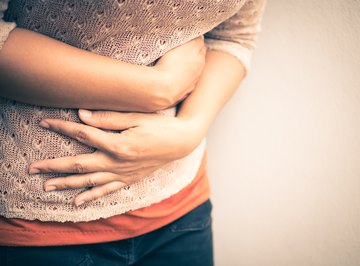
Numerous enzymes are involved in breaking down different compounds in food as it passes through the digestive tract. Amylase is found in two main areas – saliva in the mouth and pancreatic juice in the pancreas. Pancreatic juice is secreted into the small intestine where it helps continue digestion. In both areas amylase helps to break down starch into simpler sugars.
Salivary and Pancreatic Amylase
Amylase produced in the mouth is known as salivary amylase and in the pancreas it is known as pancreatic amylase. Both are forms of alpha-amylase, the main type found in humans and other animals. Amylase breaks down starch, a type of insoluble carbohydrate produced by plants to store energy into smaller glucose units. It does this by successively cleaving the linkages between glucose molecules, forming first smaller soluble starches and eventually maltose and dextrin.
Physiological Conditions in the Stomach
Like most enzymes, amylase requires certain conditions for its activity. In the mouth and pancreas, it needs an optimum pH of 6.7 to 7.0. It also works best at human body temperature and needs various other compounds to be present. In the stomach, conditions are quite different from those in the mouth. The presence of gastric acid makes the stomach strongly acidic, with a pH during digestion of around 1.0 to 3.0. This is outside the range at which amylase can work.
Activity in the Fundus
However, salivary amylase is not inactivated as soon as it reaches the stomach. Since being secreted in the mouth, it has continued to remain active as food is swallowed and passed through the esophagus. From here, food passes into the first part of the stomach called the fundus, located in the upper curve. Food may remain here for about an hour without being mixed with gastric juice, during which time amylase can continue to work.
Amylase Inactivation in the Stomach
The fundus is primarily a storage region. The larger central part of the stomach known as the body is where most activity takes place. After food enters the stomach, gentle waves known as peristaltic movements pass over it. They mix and macerate food, reducing it to a thin liquid called chyme. Though the movements do not affect the fundus as much as the body, eventually the churning movements and the mixing of chyme with gastric acid mean that amylase is inactivated.
References
- Principles of Anatomy and Physiology; Gerard J. Tortora and Sandra Reynolds Grabowski
About the Author
Based in Scotland, Clare Smith is a writer specializing in natural science topics. She holds a Master of Science in plant biodiversity from the University of Edinburgh.
